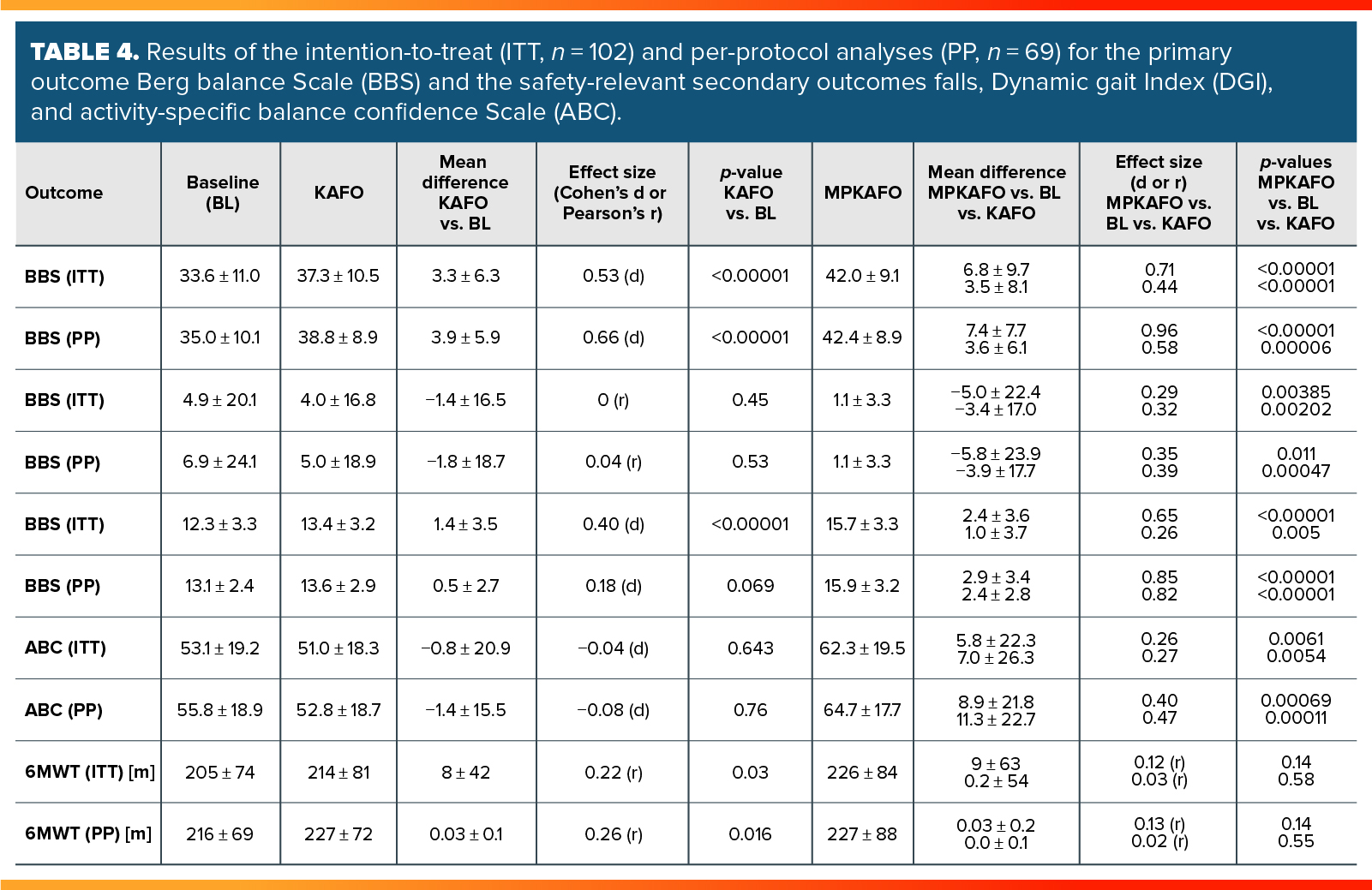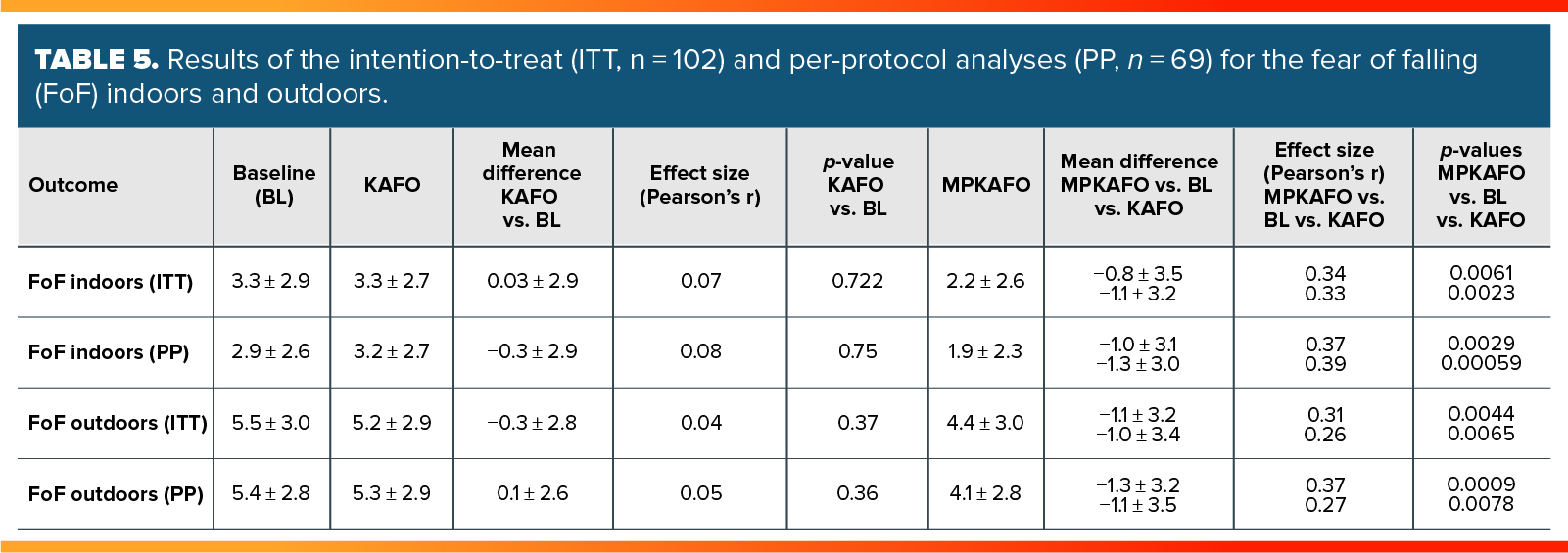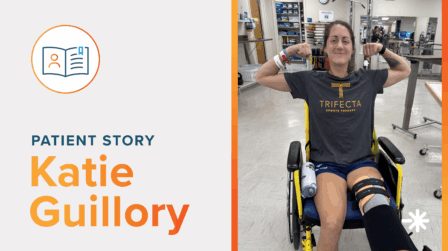A Microprocessor Stance and Swing Control Orthosis Improves Balance, Risk of Falling, Mobility, Function, and Quality of Life of Individuals Dependent on a Knee-Ankle-Foot Orthosis for Ambulation

Journal
Disability and Rehabilitation
READ ONLINE
Authors
Axel Ruetza1, Tom DiBello2, Chris Toelle3, Bea Hemmend4, Jason Wening5, Eric Weber6, Frank Braatz7, Tobias Winkler8, Friedemann Steinfeldt9, Marina Umari10, Rüdiger Rupp11, Sascha Kluge12, Alexander Krebs13, and Shane Wurdeman14
Background
Despite the advances in orthotic technology, locked knee-ankle-foot orthoses (LKAFOs) have remained the standard of orthotic care for individuals with muscular knee instability.1-4 However, stumbles, variable step lengths, changes in walking direction, and negotiating uneven terrain, slopes, and stairs represent challenging environments where LKAFOs perform poorly. Recently developed microprocessor knee-ankle-foot orthoses (MPKAFOs) regulating both stance and swing control provide hydraulically regulated knee flexion and extension resistance designed to promote increased activity and safety through nearly normal gait on all types of terrains.
The primary hypothesis of this study was that legacy users of traditional knee-ankle-foot orthoses (KAFOs) would demonstrate improvements in balance and fall risk when using MPKAFOs. The secondary hypothesis of the study was that MPKAFOs would reduce the number of falls and improve performance-based function, patient-reported mobility, participation, and quality of life compared to the legacy KAFOs.
Objective
Investigate the potential benefits of MPKAFOs compared to LKAFOs in a large sample of KAFO users.
Design
This study was a multicenter, randomized, controlled, cross-over clinical trial conducted at 13 international sites and approved by 10 ethics committees or institutional review boards. An analysis was conducted with 120 legacy KAFO users with elevated fall risk randomized to either their standard KAFO or an MPKAFO, with each group crossing over to the other condition after three months.
Results
Outcomes for function, mobility, and quality of life showed significant improvements with the MPKAFO.
Primary outcome measure: Berg Balance Scale (BBS)
The use of the MPKAFO resulted in improved balance assessed by the BBS compared to KAFO. With the MPKAFO, the BBS improved by 3.3 ± 6.3 points (p < 0.0001). Significantly fewer participants presented BBS scores <40 indicative of increased fall risk (16 vs. 36, p = 0.018). Mean falls reduced from 4.0 ± 16.8 to 1.1 ± 3.3 (p = 0.002).

Secondary outcome measures: Performance-based outcomes
The Dynamic Gait Index (DGI) improved with the use of an MPKAFO, exceeding the reported minimal clinically important difference (MCID). This indicates a clinically meaningful performance improvement in eight walking tasks. In addition, participants presented a significant improvement in the quality of gait during stair descent with the MPKAFO (ITT: 6.0 ± 4.2/PP: 6.1 ± 4.3) compared to the traditional KAFO (ITT: 4.5 ± 3.5; p = 0.008/PP: 4.8 ± 3.5; p = 0.006) and baseline (ITT: 4.0 ± 3.3; p = 0.001/PP: 4.3 ± 3.4; p = 0.001).
Secondary outcome measures: Patient-reported outcomes
The number of falls reported by the participants was significantly lower (80%) with the MPKAFO than with the standard KAFO and at baseline. In addition, the number of study participants who fell more than once during the three-month observation periods was significantly lower with the MPKAFO than with the standard KAFO in both the intention-to-treat (ITT) and per-protocol (PP) analyses. Also, with the MPKAFO, the fear of falling both indoors and outdoors was improved significantly in the ITT and PP analyses.

Patient-reported orthotic function assessed with the Orthotic Prosthetic User Survey (OPUS) – Lower Extremity Functional Status also showed significant improvement with the MPKAFO, including improved quality of life in four of the nine dimensions of the 36-Item Short Form Health Survey (SF-36). In addition, the PP analysis found an improved reintegration into normal living, physical output, quality of life, and utility of the orthosis in those participants who had adhered to the entire protocol.

Conclusion
This study confirmed that MPKAFOs improve balance compared to LKAFOs as demonstrated by the reduced risk of falling. Additionally, this study partially confirmed that MPKAFOs improve performance-based function, patient-reported mobility, participation in normal life, and quality of life compared to traditional KAFOs.
The improvements in fall risk and mobility can be attributed to the stumble recovery and controlled knee flexion during weight bearing of the MPKAFO and have a positive impact on the quality of life of users.
- When prescribing traditional KAFOs, their known limitations, such as limited function and mobility, and the requirement to walk with compensatory mechanisms, especially on non-level terrains, should be considered.
- For patients with compromised balance and increased risk of falling when using a traditional KAFO, an MPKAFO may be considered as an orthotic option to reduce their fall risk.
- For patients with mobility restrictions using a traditional KAFO, an MPKAFO may be considered to improve function, mobility, reintegration into normal living, and quality of life.
More Published Research
This publication is just one of the studies conducted by the Hanger Institute for Clinical Research and Education, in collaboration with leading researchers, clinical, and academic institutions.
1. ÓConnor J, McCaughan D, McDaid C, et al. Orthotic management of instability of the knee related to neuromuscular and central nervous system disorders: systematic review, qualitative study, survey, and costing analysis. Health Technol Assess. 2016;20(55):1–262. doi: 10.3310/hta20550.
2. McDaid C, Fayter D, Booth A, et al. Systematic review of the evidence on orthotic devices for the management of knee instability related to neuromuscular and Central nervous system disorders. BMJ Open. 2017;7(9):e015927. doi: 10.1136/bmjopen-2017-015927.
3. Zacharias B, Kannenberg A. Clinical benefits of stance control orthosis systems: an analysis of the scientific literature. J Prosthet Orthot. 2012;24(1):2–7. doi: 10.1097/JPO.0b013e3182435db3.
4. Rafiaei M, Bahramizadeh M, Arazpour M, et al. The gait and energy efficiency of stance control knee-ankle-foot orthoses: a literature review. Prosthet Orthot Int. 2016;40(2):202–214. doi: 10.1177/0309364615588346.
Latest Updates
Subscribe to stay up-to-date on our latest posts.


